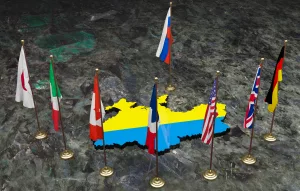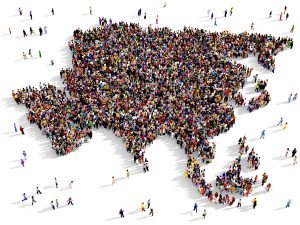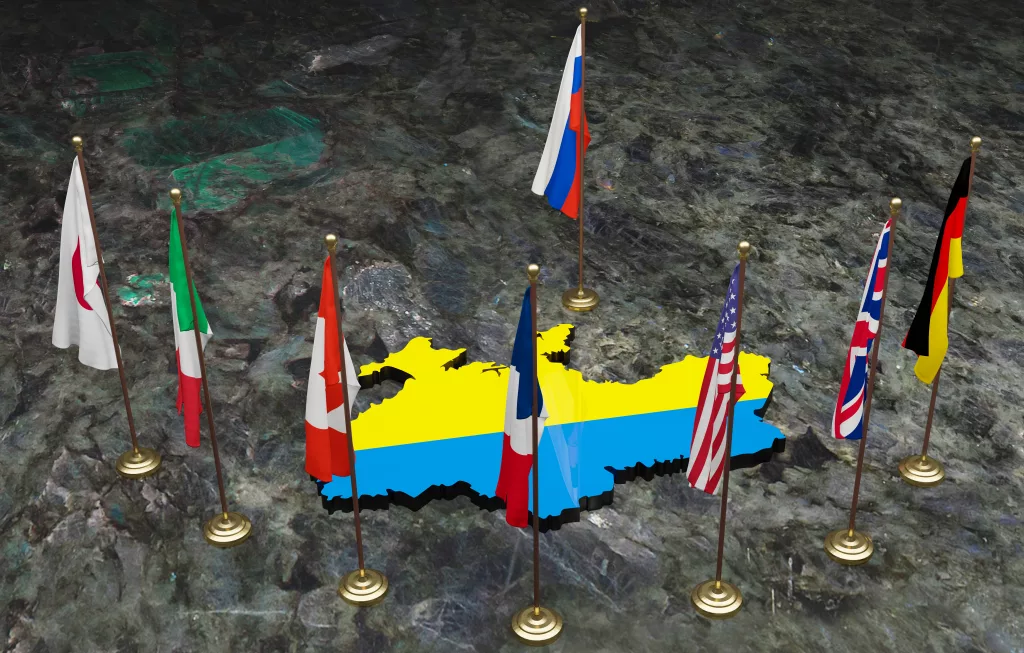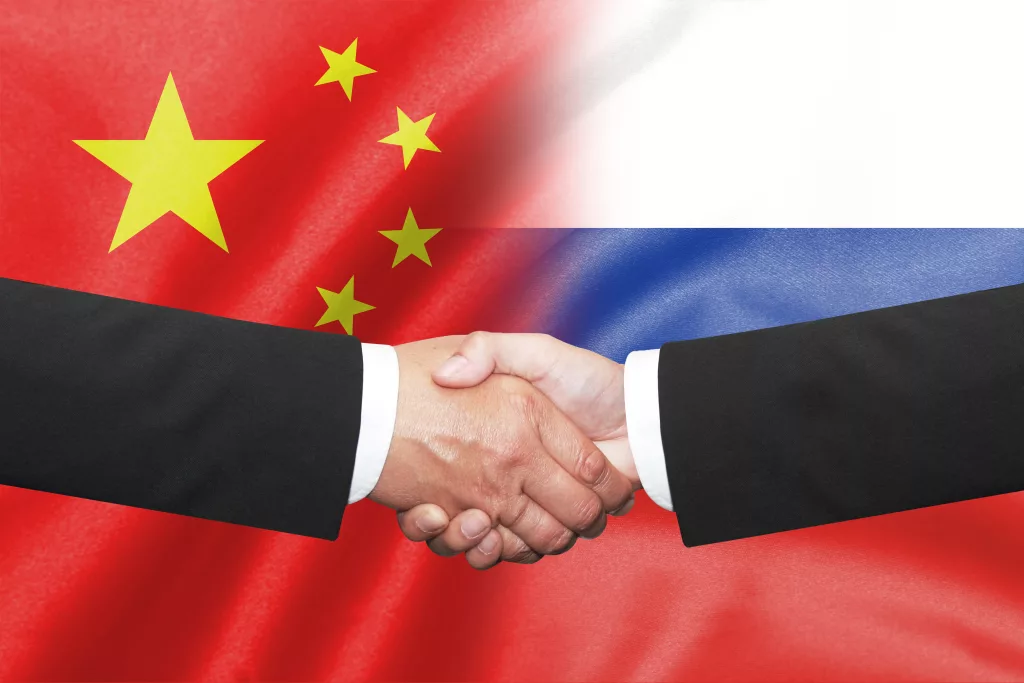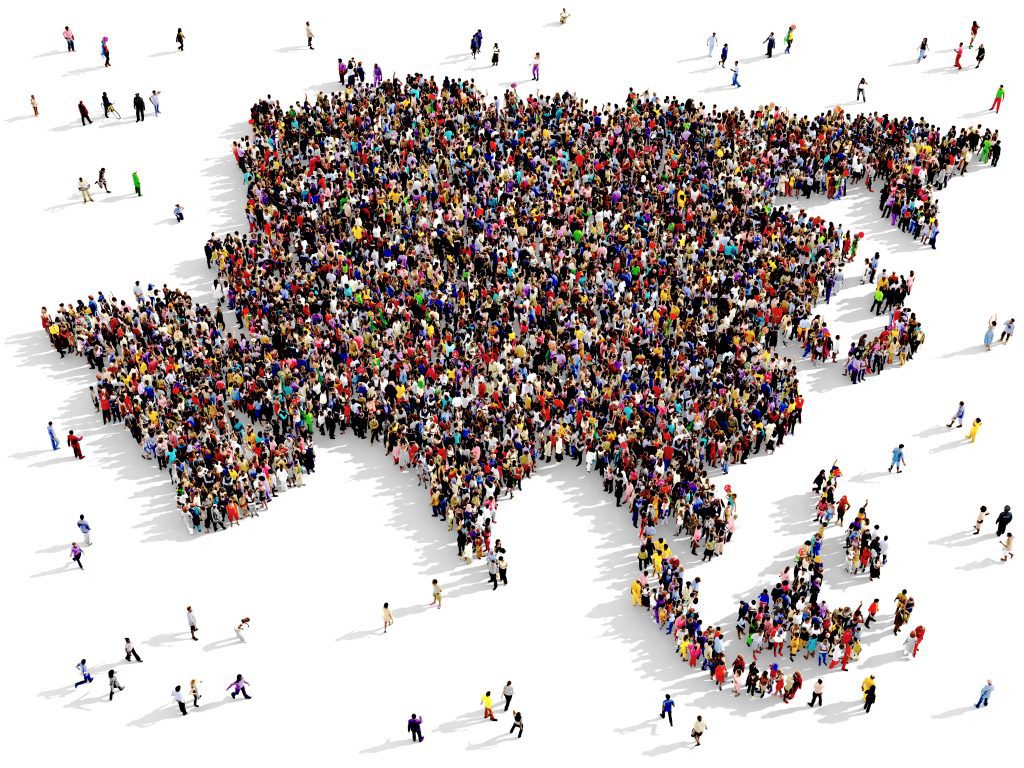When we think of Eurasia, most of us probably imagine the vast grassland stretching from Budapest to Beijing: the name conjures up images of Marco Polo, nomadic empires and the Silk Roads. Today, we might think of the Chinese Belt and Road, with its engineers throwing highways, railways and pipelines across Central Asia, and building vast inland rail-ports to handle trade. One theme is consistent: from Halford Mackinder, who introduced the concept to Western audiences, to Bruno Macaes, who writes fluently on it today, most strategists have seen Eurasia as a firmly terrestrial idea.
This is all quite wrong, argues Geoffrey Gresh, a professor at the US National Defense University in Washington DC. Eurasia, Gresh believes, is best thought of as a maritime construct. Whereas Mackinder spoke of ‘the world island’, with the hinge of global power somewhere in Ukraine (something to think about on the anniversary of the Russian invasion), Gresh would have us focus on the seas surrounding it: not only well known flashpoints like the Baltic, Mediterranean or South China Seas, but the increasingly-navigable Arctic Ocean too.
After all, the seas are arguably the most important theatre in contemporary geopolitics. Despite the hype over the new Chinese railways running from Hangzhou to London, 90% of all physical goods traded globally continue to move by sea. Quite simply, it’s a question of scale: even the smallest freighter far outstrips the capacity of a train. When Ukraine needed to export grain last year, it had to do so by sea – trains and lorries just couldn’t cope. If you’ve ever bought anything made overseas, from a pair of shoes to a new car, it almost certainly came by sea. The same is true for oil, liquid natural gas, food, animal feed, and the raw materials that make everything we take for granted, from the plastic beads extruded into household goods to the rare earths that power the device you’re reading this article on. Maritime trade underpins everything: in short, raw materials go into Far Eastern ports, and manufactured goods come out. Everything else in the global economy relies on this movement.
As this trade has grown more significant, ships have only gotten bigger. The sizes of the vessels that ply the routes to the east are staggering. Chinamax-class bulk carriers, built to carry iron ore to feed China’s steelmaking industry, are long enough that you could lay Big Ben lengthways on their decks – four times. The increasing size of ships has had huge knock-on effects. London was once the world’s busiest port, handling 40% of all global trade. Now, the Docklands are covered in skyscrapers: London couldn’t adapt and was left behind. The global shift of power to the East is reflected most visibly in the patterns of maritime trade. Today, nineteen of the twenty busiest ports are Asian. Fifteen of them are Chinese.
But the global maritime trading network that underpins modern life is remarkably fragile. When the MV Ever Given ran aground in the Suez Canal for six days in March 2021, the snarl in the supply chain cost at least $9.6 billion in lost trade. Gresh points to Suez as just one of the ‘chokepoints’ of maritime Eurasia, where accidents – or military action – could have devastating impacts on the global economy. Others include the pirate-infested Straits of Malacca, the quickest link between the Indian Ocean and the South China Sea, guarded at one end by Singapore; the Dardanelles, the only approach to the Black Sea; and the Strait of Hormuz, control of which means control of access to the oil-rich Persian Gulf. All of these are vital waterways, and all of them are increasingly at risk.
Even those who work in the digital economy cannot afford to ignore maritime geopolitics, as Gresh shows. As much as 99% of the Internet runs through a vast network of undersea cables crisscrossing the globe. For efficiency, these cables closely track major trade routes and run through the same chokepoints. They are especially vulnerable where they come ashore, from both accidental damage and sabotage. While these cables used to only come into the news for amusing reasons, like the time a grandmother digging for copper accidentally cut off Armenia’s internet, they are increasingly being recognised as a serious vulnerability that needs to be guarded. Russia frequently implies an ability, and potentially a willingness, to sever the transatlantic cables that link the US to Europe. Were they to be cut, and rerouting were not possible, it would have catastrophic impacts on global communications, and on the economy.
From the Mediterranean to the South China Sea, the Arctic to the Persian Gulf, the most crucial waterways for global trade, energy production and maritime security are all Eurasian. But who will control them? American naval hegemony is waning. There is no longer the money, physical capacity or public support for the US to continue to police every ocean. There are also, for the first time since the Second World War, now serious peer competitors for the US Navy. Instead of one country policing the seas, as the US and Britain have done between them since Trafalgar, in the 21st century seapower will be divided and distributed, with some countries dominating their regional seas, but with no one likely to be able to rule every ocean at once. This has the potential to seriously threaten the freedom of the seas that has been responsible for contemporary globalisation and economic growth. What happens when critical seas can suddenly be closed to trade, and no one else has the power to smash a blockade? Globalisation would be suddenly thrown into reverse.
Who will these future regional sea powers be? While the US, UK and Australia will still have a role to play – as demonstrated by the recent AUKUS pact – Gresh identifies China, Japan, Russia and India as the emerging powers to watch, and provides a comprehensive analysis of each. While naval enthusiasts will be the most likely to enjoy these chapters, those working in international trade, investment, and business can also benefit from Gresh’s sober, balanced look at the evolving security situation, and his commentary on how this might impact the global economy.
The great force in the future of maritime Eurasia is climate change, which makes for some of Gresh’s most interesting chapters. Melting ice caps mean that the Arctic Ocean is now navigable in the summer, which will have massive impacts on global trade and geopolitics. The route from Shanghai to Rotterdam via the Arctic is 30 to 50% shorter than the routes via Malacca, Suez, or Panama. For the longest time, ships couldn’t make the Arctic passage without an icebreaker escort – invariably Russian – but in 2018, the first freighter made it through unassisted. More will follow.
Arctic shipping may, paradoxically, even benefit the environment. Shorter routes will mean less fuel is required, and emissions are reduced. When Mackinder first wrote about Eurasia a hundred years ago, he dismissed the northern sea as permanently frozen, and irrelevant to trade and defence. This has changed. In the face of a new reality no one, from shipbrokers to naval officers, can afford to ignore what China, which now describes itself as a ‘near Arctic state’, quite romantically calls the Polar Silk Road.
The importance of Eurasian waters has been recognised for centuries. As a Portuguese adventurer arriving in the Straits of Malacca in the early 1500s observed, ‘whoever is lord of Malacca has his hand on the throat of Venice’, his country’s great rival for Eastern trade. Shortly afterwards, Portugal took Malacca, and with it the trade monopoly in the East. Venice was never powerful again. Contemporary strategists and thought leaders would be wise to take note – and read Gresh’s book.
Geoffrey Gresh, To Rule Eurasia’s Waves: The New Great Power Competition at Sea. Yale University Press, 2020.
Buy here: https://yalebooks.yale.edu/book/9780300234848/to-rule-eurasias waves/



